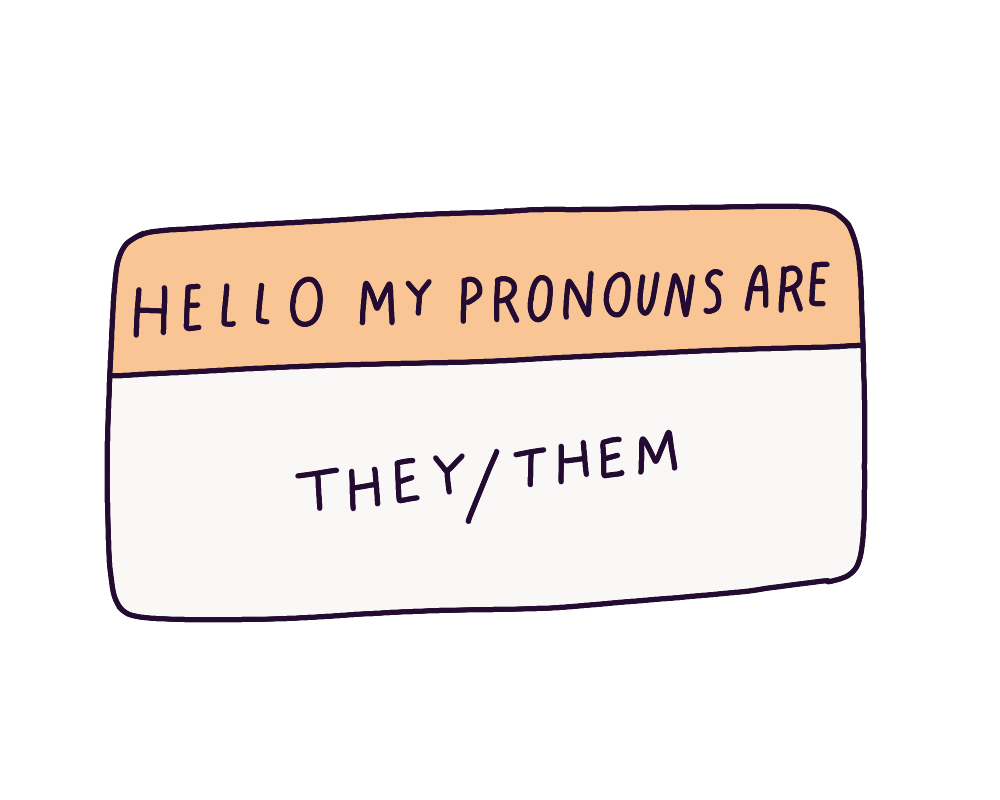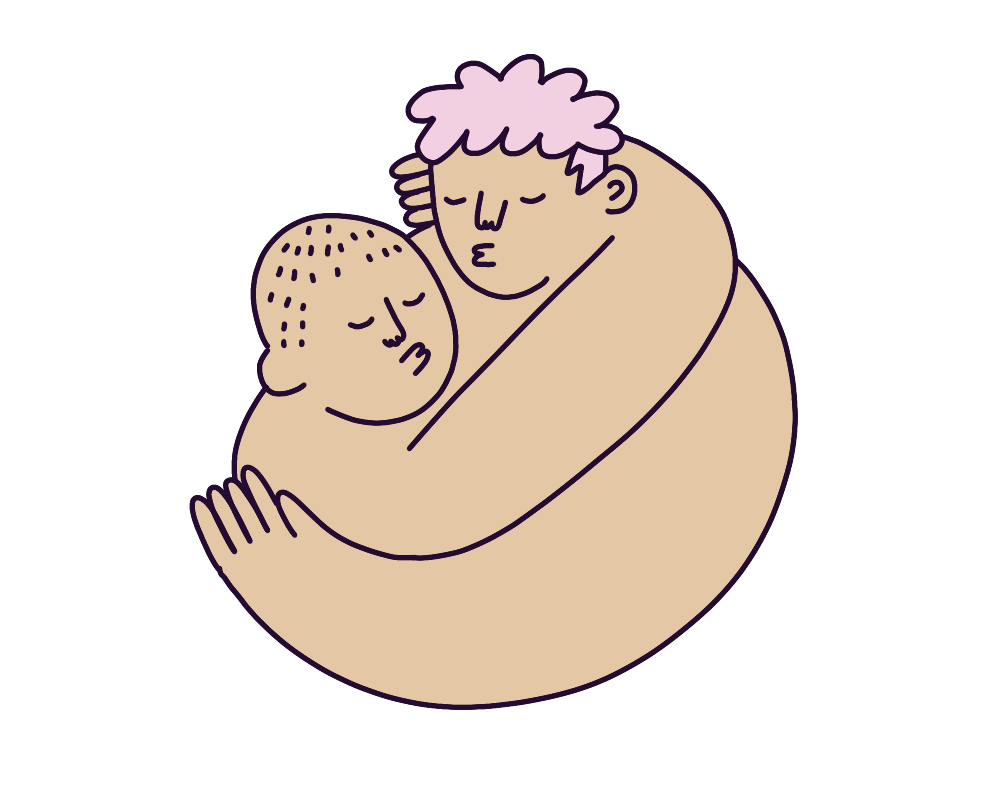Sex, gender, and sexuality
Many people think that ‘sex', ‘gender’, and 'sexuality' are the same thing, but they aren’t.


What are the relationships between sex, gender and sexuality? What do these words mean? How are they similar, and how are they different?
What do sex, gender and sexuality mean?
📗 Sex refers to the biological and physical characteristics,such as hormones, genitals, and chromosomes, of human beings and animals, which are often associated with reproduction.
- Sex assigned at birth
Most people are assigned a sex at birth. This means that a nurse, doctor or midwife would have looked at your genitals, and then given you a label based on what they saw.
Most people who have a
But biological sex isn’t actually that simple. Sex can be determined by a combination of chromosomes (for example XX or XY), hormone levels, genes, and physical characteristics like genitals.
- Intersex
📗 Intersex refers to people who don't fit neatly into medical norms for male or female bodies.
Many people assume that there are only two sexes, male and female. However, there is actually significant variation in the biological factors for sex and how these are expressed, including chromosomes, hormone levels, and even genes. In fact, there are as many as 40 different intersex variations that have been verified by scientists.
Like most people, intersex individuals have diverse sexualities, gender identities, and expressions.
🧐 Did you know?
Between 1 to 2 out of every 100 people is intersex. This is about the same as the proportion of redheads in the world.
Source:
Intersex Human Rights Australia. Read more [here] .
Sometimes, there are health reasons to refer to the sex we’re assigned at birth. For example, someone with a vulva and uterus may have different health needs from someone with a penis and testes. However, when it comes to gender, things get a little more complicated.
📗 Gender refers to the cultural and social aspects of how we relate to ourselves and one another in society.
Most people who are assigned male (sex) at birth will grow up and identify as men (gender), while most people who are assigned female (sex) at birth will grow up and identify as women (gender).
However, this is not always true for everyone. Everyone will differ in terms of our relationships to gender identity, gender role, and gender expression.
- Gender identity
📗 Gender identity refers to your internal sense of your gender: How you identify.
Gender identity is very personal.
For most people, words like ‘boy’ or ‘man’, or ‘girl’ or ‘woman’ feel like they fit. If your gender identity matches the sex that you were assigned at birth, that means that you’re cis or cisgender.
For some, the words don't always fit. For example, you might be called a 'girl', even if you feel like a boy, and want to be treated like a boy. Or, you might be called a 'boy', even if you feel like a girl, and want to be treated like a girl. If your gender identity does not neatly ‘match’ the sex you were assigned at birth, this may mean that you’re trans or transgender.
There are also individuals whose gender identity doesn’t neatly fit the labels of ‘man’ or ‘woman’. Some may describe themselves as genderqueer, nonbinary,or gender diverse.
It is important to respect the labels and terms that people use to describe themselves, including one another's pronouns (such as he/she/they).
- Gender roles
📗 Gender roles are the expected roles or behaviours that are associated with a particular gender, that we learn from various parts of society, such as our family, media and culture, including porn.
Many people think ‘men should be X’, and ‘women should be Y’. This means that most people have ideas and expectations about different gender roles for men and women.
However, as we grow from being a baby to a child to an adult, we learn more about ourselves, and who we are in the world. For many people, the gender roles that we’re ‘supposed’ to have don't always fit us well. After all, there are so many ways to be a person in the world, and gender is far more varied than this.
❓ How does porn influence the way you think about gender roles?
Think about porn that you’ve watched in the past. What are some of the gender roles that you’ve observed?
- Gender expression
📗 Gender expression refers to the social cues we use to express our gender identity, or our sense of self in the world. This can include things like how we dress, and our hairstyle.
In reality, the way you express yourself can be very different from what society expects of you. This can depend on different things, such as who you’re with, how long you’ve known one another, or even from day to day, month to month, and year to year. What is seen as feminine in one culture (like skirts in Australia), may be actually seen as gender nonbinary in another culture (like sarong in Malaysia or Indonesia) or even masculine (like kilts in Scotland).
📗 Sexuality refers to the thoughts, feelings and attractions that we have to other people.
- Sexual Orientation
📗Sexual orientation refers to our identity in relation to the gender of the people that we are attracted to.
People can describe their sexual orientation as
It’s important to note that gender and sexuality are not the same thing. Both cis and trans women can be straight, bisexual, gay, lesbian, or asexual. Just as with sex and gender, sexuality is also not black and white. It’s important to learn to respect one another across our differences.
Remember: Love is love!
- Sexual behaviour
📗Sexual behaviour refers to what we actually do sexually, which can be different from our sexual orientation (or who we are attracted to).
There are many factors that can influence this. Because of social stigma such as queerphobia and heteronormativity , a person may be sexually active only with people of another gender, despite primarily being attracted to people of the same gender.
For example, some gay, bisexual and lesbian people may not feel comfortable openly acknowledging or acting on their same-gender attractions, and so may present themselves as straight when relating to others. At the same time, many people who identify as straight may also engage in same-gender sexual activity at different points in their lives.
In summary
Sex, gender, and sexuality are not black and white, and there are far more shades of rainbow than mainstream society usually thinks about. Let’s learn to support one another through our differences.
Help us improve this info by letting us know how you found it.
Start
Unpacking Queerphobia and Heteronormativity
